Nutritional Overview
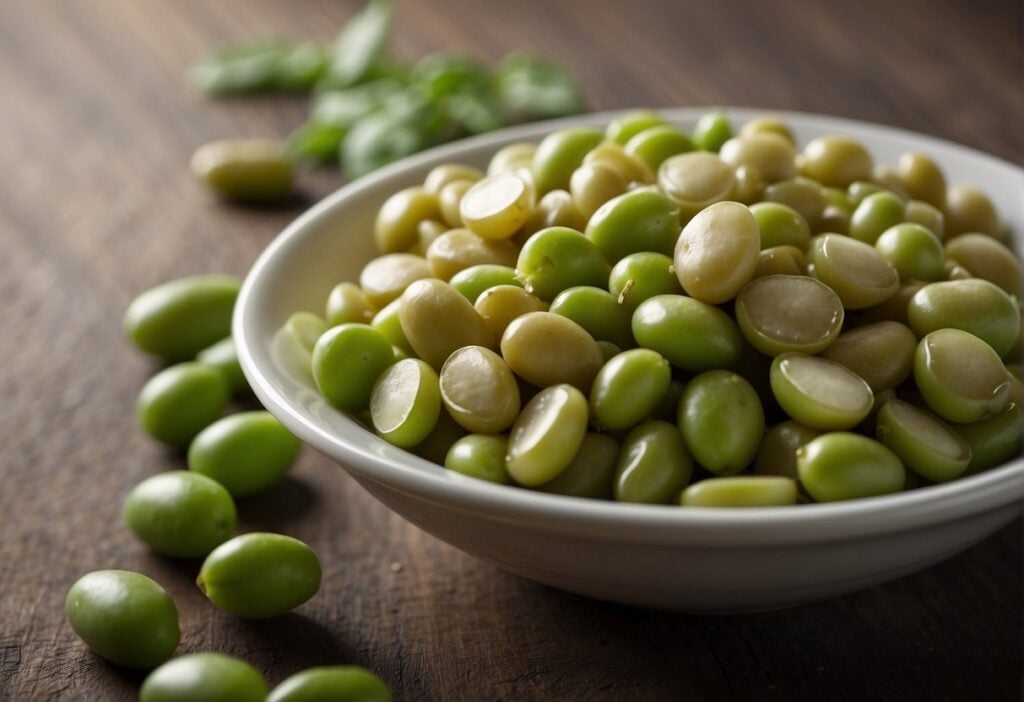
When comparing the nutritional profiles of lima beans and fava beans, it is important to note that both legumes offer an array of essential nutrients. Lima beans are an excellent source of thiamin, niacin, and Vitamin B6, while fava beans are higher in folate content. Both beans are also rich in calories, dietary fiber, and potassium. Additionally, lima beans provide a substantial amount of Vitamin C and iron. Incorporating these nutritious legumes into your diet can add diverse flavors and valuable nutrients to support a well-balanced lifestyle.
Nutritional Content Of Lima Beans
Lima beans are packed with essential nutrients that contribute to a healthy and balanced diet. They are an excellent source of thiamin, niacin, and Vitamin B6, which play a vital role in maintaining proper brain function and boosting energy levels. Lima beans are also rich in dietary fiber, promoting digestive health and aiding in weight management. With a generous amount of potassium, lima beans help regulate blood pressure and reduce the risk of cardiovascular disease. Additionally, they provide a substantial amount of Vitamin C and iron, supporting immune function and promoting healthy red blood cell production. Incorporating lima beans into your meals adds both taste and valuable nutrients to your diet.
Nutritional Content Of Fava Beans
Fava beans are highly nutritious legumes that provide a wide range of essential nutrients. They are an excellent source of dietary fiber, which aids in digestion and promotes feelings of fullness. Fava beans are also a good source of plant-based protein, making them a valuable addition to vegetarian or vegan diets. These beans are rich in folate, a B vitamin necessary for healthy cell growth and development. Additionally, fava beans contain significant amounts of iron, magnesium, and potassium, which support overall health. Incorporating fava beans into your meals can contribute to a well-rounded and nutrient-dense diet.
Health Benefits

Lima beans and fava beans offer several health benefits due to their rich nutrient profiles. Lima beans are known for their high fiber content, which aids in digestion and promotes a healthy gut. They also provide a good source of manganese, potassium, iron, and vitamins B1, B5, and B6, which are essential for various bodily functions. On the other hand, fava beans are a great source of plant-based protein, making them an excellent choice for vegetarians and vegans. They are also rich in copper and phosphorus, which support bone health and energy production. Incorporating both beans into your diet can contribute to a well-rounded and nutritious eating plan.
Health Benefits Of Lima Beans
Lima beans offer several health benefits due to their rich nutrient profile. They are an excellent source of dietary fiber, which aids in digestion and helps maintain a healthy gut. The fiber content also helps regulate blood sugar levels and promotes a feeling of fullness, making them a great addition to a weight management diet. Lima beans are also packed with essential vitamins and minerals, such as manganese, potassium, iron, and vitamins B1, B5, and B6, which are important for overall bodily functions. Incorporating Lima beans into your diet can contribute to a well-rounded and nutritious eating plan.
Health Benefits Of Fava Beans
Fava beans offer a multitude of health benefits. They are packed with protein, containing about 26.12g per 100g, making them an excellent plant-based protein source for vegetarians and vegans. Fava beans are also rich in potassium, providing about 2.27x more than Lima beans, which is important for maintaining healthy blood pressure levels. Additionally, fava beans are high in dietary fiber, with about 5.1x more fiber than Lima beans, aiding in digestion and promoting a feeling of fullness. Incorporating fava beans into a balanced diet can contribute to overall health and well-being.
Cooking And Preparation
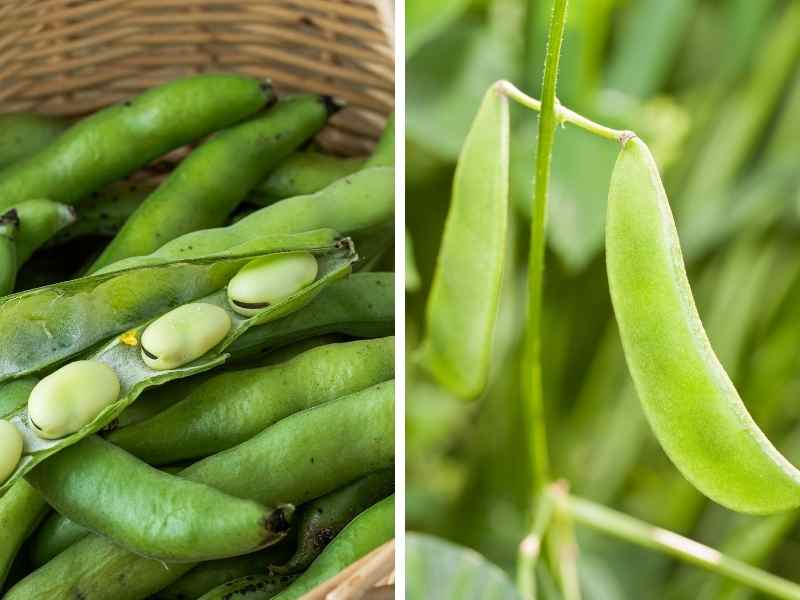
Fava beans and Lima beans can be prepared in various ways to suit individual tastes and preferences. Lima beans are often boiled or steamed until tender, and can be used in a variety of dishes such as stews, soups, and side dishes. Fava beans, on the other hand, require a little more preparation. The beans need to be removed from their thick pods and then blanched and peeled before cooking. They can be boiled, steamed, grilled, sautéed, or even pureed to be used in dishes like salads, dips, purees, and even roasted for a crispy texture. Both beans offer versatility in cooking, allowing for creativity in the kitchen.
Cooking Methods For Lima Beans
Lima beans can be cooked using several methods to suit your taste and preference. One common way to prepare them is by boiling or steaming. Simply add the beans to a pot of boiling water and cook until tender. Another popular method is to sauté the beans with olive oil and your choice of seasonings for a delicious side dish. Lima beans can also be added to stews or soups for added texture and flavor. Additionally, they can be pureed and used as a base for dips or spreads. Get creative and experiment with different cooking methods to discover your favorite way to enjoy lima beans.
Cooking Methods For Fava Beans
Fava beans can be cooked in a variety of ways to suit your taste and culinary preferences. One popular method is to boil them until tender, which can take about 15-20 minutes. Alternatively, you can roast fava beans in the oven for a crispy and flavorful snack. Another delicious option is to sauté them with olive oil and your choice of seasonings. Fava beans can also be pureed and used as a base for dips or spreads. Get creative and experiment with different cooking methods to elevate the taste and texture of fava beans in your dishes.
Allergies And Cautions
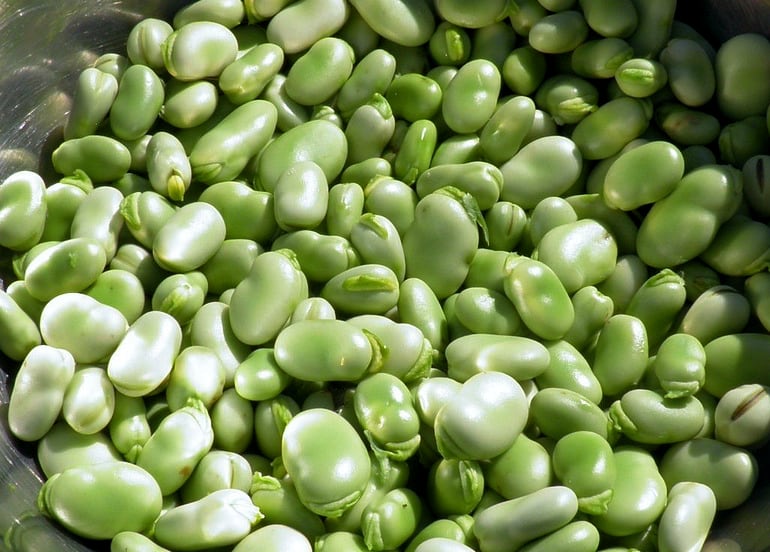
Fava beans and Lima beans are generally considered safe to consume, but it’s important to be aware of potential allergies and cautions. Both beans belong to the legume family, which can sometimes trigger allergic reactions in certain individuals. If you have a known allergy to legumes or have experienced symptoms such as hives, difficulty breathing, or digestive issues after consuming beans, it’s best to avoid them. Additionally, it’s important to note that beans can cause bloating and gas in some people due to their high fiber content. To prevent discomfort, gradually introduce beans into your diet and ensure they are cooked thoroughly. Always consult with a healthcare professional or allergist if you have any concerns or specific dietary needs.
Allergy Considerations For Lima Beans
Lima beans, like most legumes, can cause allergic reactions in some individuals. People with legume allergies or those who have experienced symptoms such as hives, difficulty breathing, or digestive issues after consuming beans should avoid consuming Lima beans. It’s important to note that cooking Lima beans thoroughly may help reduce the possibility of an allergic reaction. If you have any concerns or specific dietary needs, it is best to consult with a healthcare professional or allergist.
Allergy Considerations For Fava Beans
People with legume allergies or those who have experienced allergic reactions after consuming beans should be cautious when it comes to fava beans. Like other legumes, fava beans have the potential to cause allergic reactions such as hives, difficulty breathing, or digestive issues in sensitive individuals. Cooking fava beans thoroughly may help reduce the risk of an allergic reaction. If you have known allergies or concerns about consuming fava beans, it is best to consult with a healthcare professional or allergist for proper guidance and advice.
Side Effects
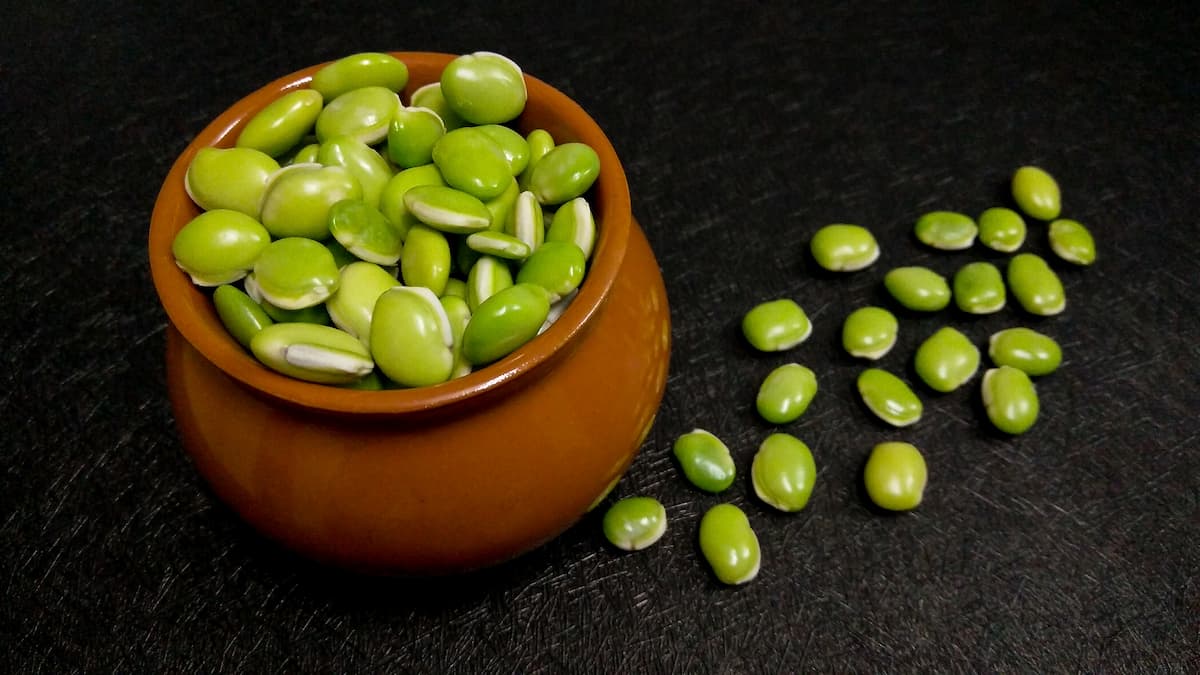
Consuming Lima Beans and Fava Beans can have potential side effects, especially when consumed in large quantities or by individuals with specific health conditions. Both beans contain oligosaccharides, a type of carbohydrate that can cause bloating, gas, and digestive discomfort. It is recommended to start with small amounts and gradually increase consumption to allow the body to adjust. Additionally, overconsumption of Lima Beans and Fava Beans can lead to an excessive intake of certain nutrients, such as copper, which may cause adverse effects. It is always advisable to consult a healthcare professional or nutritionist for personalized advice and guidance.
Potential Side Effects Of Consuming Lima Beans
Consuming Lima Beans can have potential side effects, especially when consumed in large quantities or by individuals with specific health conditions. Lima Beans contain oligosaccharides, a type of carbohydrate that can cause bloating, gas, and digestive discomfort. It is recommended to start with small amounts and gradually increase consumption to allow the body to adjust. Additionally, overconsumption of Lima Beans can lead to an excessive intake of certain nutrients, such as copper, which may cause adverse effects. It is always advisable to consult a healthcare professional or nutritionist for personalized advice and guidance.
Potential Side Effects Of Consuming Fava Beans
Consuming Fava Beans can also have potential side effects, particularly if consumed in excessive amounts or by individuals with certain health conditions. Fava Beans contain high levels of FODMAPs, which are poorly digested carbohydrates that can lead to bloating, gas, and abdominal discomfort. Additionally, some people may be allergic to Fava Beans, experiencing symptoms such as itching, swelling, and difficulty breathing. It is important to listen to your body and monitor any adverse reactions when incorporating Fava Beans into your diet. If you have any concerns or pre-existing conditions, it is recommended to consult a healthcare professional for personalized advice.
Conclusion
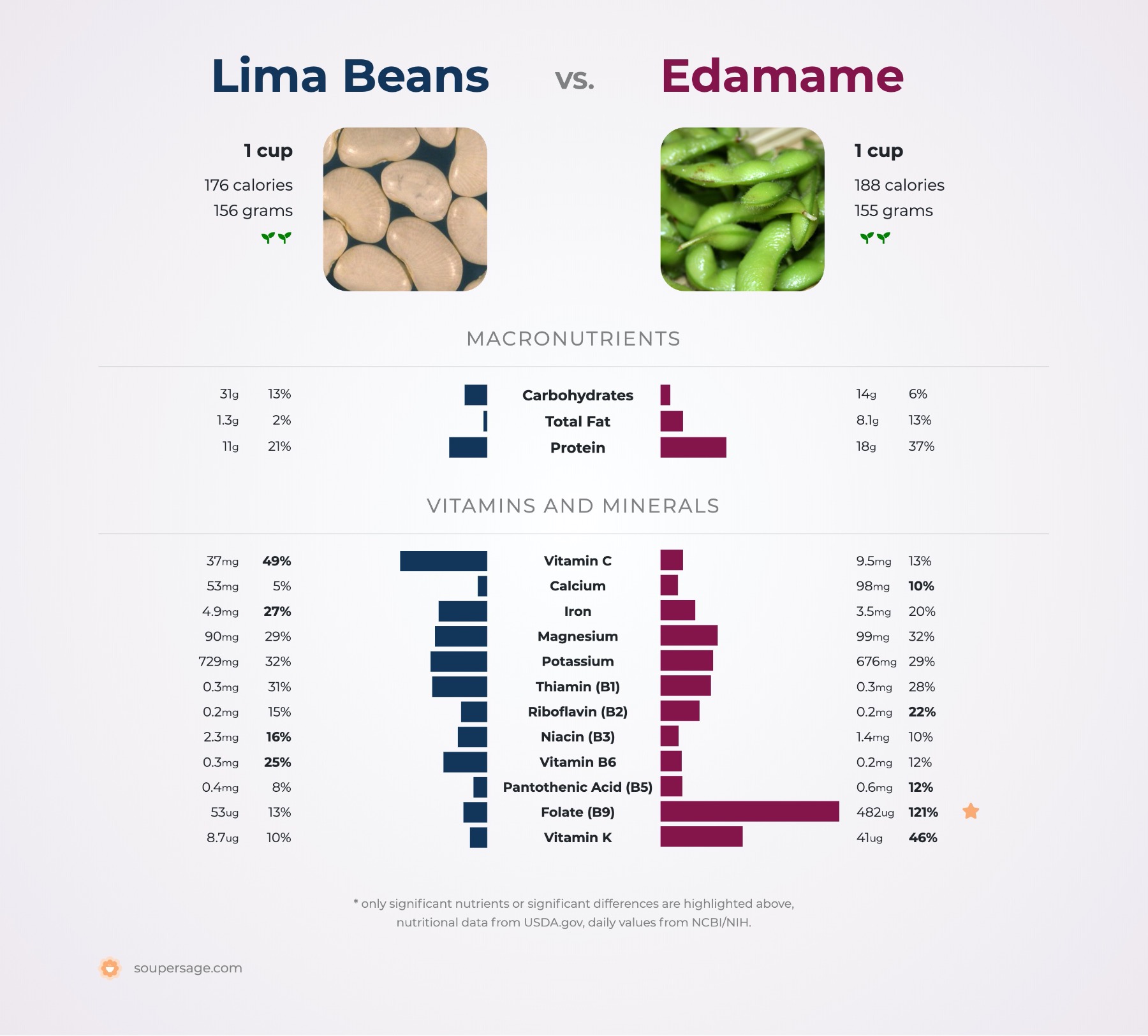
In conclusion, when comparing Lima Beans and Fava Beans, it is evident that both legumes offer numerous health benefits and are rich sources of nutrients. While Lima Beans are higher in fiber, Fava Beans provide more folate. Incorporating both beans into a balanced diet can contribute to overall health and wellness. It is important to note that individuals with certain allergies or digestive issues should consume these beans in moderation and monitor any potential side effects. Consultation with a healthcare professional is recommended for personalized dietary advice.
Summary Of Nutritional Differences Between Lima Beans And Fava Beans
Lima Beans and Fava Beans share similarities in terms of calories, dietary fiber, and potassium content. However, when comparing the specific nutrients, Lima Beans stand out for their higher levels of thiamin, niacin, Vitamin B6, Vitamin C, and iron. On the other hand, Fava Beans shine in their folate content. Incorporating both beans into a balanced diet can provide a range of essential nutrients. Consider personal preferences and nutritional needs when deciding which bean to include in your meals.
Recommendations For Incorporating Lima Beans And Fava Beans Into A Balanced Diet
To incorporate Lima Beans and Fava Beans into a balanced diet, consider the following recommendations. Firstly, try adding them to soups, stews, and salads for a boost of protein and fiber. Secondly, incorporate them into vegetarian or plant-based meals as a meat alternative. Additionally, you can blend them into dips and spreads for a nutritious twist. Lastly, combine the beans with grains or vegetables to create a complete protein source. Be sure to experiment with different recipes and cooking methods to enjoy the unique flavors and textures of both Lima Beans and Fava Beans.
FAQ About Lima Beans Vs Fava Beans: Nutritional Comparison
Q: What are the key nutritional differences between Lima beans and Fava beans?
A: Lima beans are higher in calories and protein content compared to Fava beans. Fava beans, on the other hand, contain more fiber and folate.
Q: Which beans are a better source of iron, Lima, or Fava beans?
A: Fava beans are richer in iron content than Lima beans, making them a better choice for individuals looking to increase their iron intake.
Q: Do these beans differ in their vitamin content significantly?
A: Yes, Lima beans are higher in Vitamin C and Vitamin K, while Fava beans are richer in Vitamin B6 and Vitamin B9 (folate).
Q: Are there any notable differences in mineral composition between Lima beans and Fava beans?
A: Lima beans are higher in potassium and magnesium, whereas Fava beans excel in manganese and copper content.
Q: How do the calories compare in Lima beans and Fava beans?
A: Lima beans have a higher caloric value per serving compared to Fava beans. Hence, individuals looking for a lower-calorie option may prefer Fava beans.
Q: Can both Lima and Fava beans be included in a balanced diet?
A: Absolutely, both Lima and Fava beans provide essential nutrients and can be a part of a well-rounded and nutritious diet, offering various health benefits.

ToroGrill Canada is excited to share our one-of-a-kind and authentic South American BBQ flavors with the wonderful people of Canada. Our journey began with a passion for bringing South America’s rich and vibrant culinary traditions to a new audience, and we have been dedicated to this mission ever since. Our story is one of inspiration, hard work, and the pursuit of excellence. Every recipe, every ingredient, and every cooking technique has been carefully honed and perfected to ensure that when you take a bite of our food, you experience the true essence of South American BBQ.